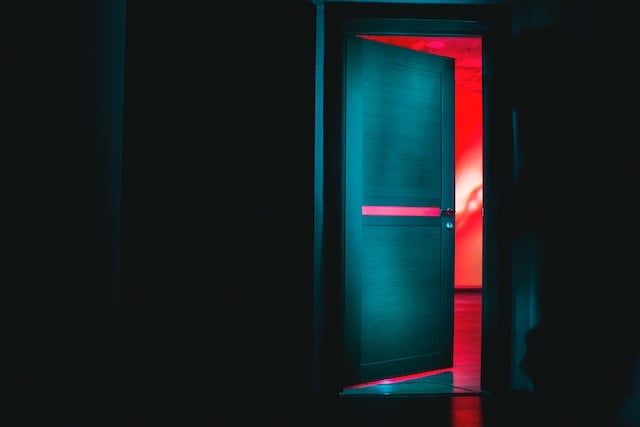Real-World Evidence (RWE) in Clinical Trials and Why it Matters

DATE
July 14, 2021
AUTHOR
Benjamin Sauer | VP Engineering
As healthcare providers aim to focus increasingly on patient outcomes, companies are looking to new data sources which go beyond traditional randomized controlled trials (RCTs) to measure and demonstrate the value of patient treatments. Real-World Evidence has been used for several decades, but recent technological and analytical advances mean that it can be applied at a whole new level.
What are Real-World Evidence and Real-World Data?
Clinical trials often don’t reflect the real world of drug delivery, which is a significant problem. Information about how patients really feel and function is often missing. At the same time, patient treatment cannot happen without clinical studies. Many experts therefore believe that the only way out of this problem is to use healthcare data which are available in massive quantities, so-called Real-World Data. In medicine, Real-World Evidence (RWE) refers to evidence which is gathered from Real-World Data (RWD) outside the context of RCTs.
Real-World Evidence
RWE is clinical evidence on the use and potential benefits or risks of a medical product or drug derived from analysis of RWD. It provides valuable additional information to the pharmaceutical industry and its associated stakeholders, such as medical device manufacturers, authorities, health insurers and hospitals. It can include patient-reported outcomes (PROs) describing the impact of a treatment on patients’ quality of life, daily activities and symptoms, as well as clinical or economic outcomes. RWE comes into play when clinical trials cannot account for the entire patient population of a particular disease.
Climedo Connect: Unlocking RWE’s Potential for HCP Engagement
Watch the recording of our Climedo Connect Webinar
Dr. Helene Vioix (Director Global Value Development Oncology, Merck) delved into best practices on how to maximise the impact of real-world data to best engage Healthcare Professionals (HCPs) and Key Thought Leaders (KTLs).

Real-World Data
RWD, on the other hand, is collected from observations of routine clinical practice in both prospective and retrospective ways. It is related to patient health status and/or health care, and is routinely collected from a variety of different sources which we will look at later. According to PharmaBoardroom, RWD make up 95% of patient data, while actual clinical trials make up just 5%.
Why does Real-World Evidence matter?
In contrast to clinical trials which usually have narrow, predefined patient criteria (e.g. only patients without pre-treatment), RWE includes all patients regardless of any specific criteria.
RWE helps medical professionals understand the real-world settings in which a drug, medical device or other treatment is applied, such as populations, care patterns and the actual burdens of a disease. Furthermore, it allows for the assessment of how effective a therapy is based on existing data, which helps physicians make better decisions. RWE is also a powerful way of refining or supplementing evidence from conventional clinical trials of new medicines. Finally, it provides new evidence of the effectiveness of new types of medical innovations on the market.
Some of the advantages of RWE for different stakeholders include:
- Doctors will receive further data on effectiveness in “real-life” practice settings and can thus make better decisions about therapies and respond to patients’ expectations.
- Health authorities will be able to more fully assess the benefits of a treatment, since they will have more “real”, not pre-selected patients
- Patients will receive additional indications of what results they can expect from a specific treatment.
- Research teams will have access to information that can be used for future study projects.
Limitations of Real-World Evidence
Despite its many advantages, there are certain factors which need to be taken into account when gathering RWE: For one, RWE carries potential for bias, given that the real-world population is extremely diverse. Therefore, RWD sources must be a good representation of the population as a whole. Furthermore, the quality of data available in the real world can vary, and the quality might not be high enough to answer certain questions, e.g. a database might contain data on thousands of study subjects, but some could be missing information about the duration or dosage of their treatment. In an ideal setting, therefore, clinical trials and RWE can be used in combination, thus providing a more comprehensive understanding of a drug, treatment or device. This can offer powerful insights into the effectiveness of treatment and potential improvement strategies.
How is Real-World Evidence collected?
There are a variety of ways of gathering RWE including:
- Surveys among patients or doctors (e.g. with ePRO solutions)
- Medical and disease registries
- Electronic health records (EHRs)
- Studies with individual patients or small patient groups
- New data (post-market observational studies or case-series data)
- Databases on side effects
- Existing data (claims, administrative data, medical charts, disease registries)
- Claims and billing activities
- Patient-generated data including in home-use settings
- Data gathered from other sources, such as mobile devices
- It can be collected on a local and global level
Which criteria must be met for Real-World Evidence studies?
There are six areas which need to be addressed when planning a RWE study.
Relevance
Firstly, the data selected should help healthcare professionals to address specific regulatory affairs questions and provide sufficient information about exposure, covariates, and outcomes for the study purpose. The gathered data should represent patients with the target condition and have sufficient size to demonstrate the treatment’s benefit.
Common data model
Furthermore, when working with medical data across several databases, it is best to use a common data model with common terminologies and coding schemes across multiple sources.
Reliability
Study coordinators and sponsors should consider whether the source of their data identifies patients of interest, outcomes of interest and covariants. They should also verify whether this data has been used in a RWE context before and whether there are enough patients of interest to support the study. Finally, the data’s completeness or any missing data must be taken into account.
Transparency
Another important aspect is transparency: In order to be acceptable, data transformation, source verification and auditing procedures for completeness and consistency must be transparent to all relevant parties involved.
Gaps
Study coordinators must have access to a variety of RWD sources to fill any potential gaps in the data they are working with.
Reporting
Finally, for the reporting aspect, it is crucial to follow reporting standards, and to document data elements and definitions, the method used for data aggregation, as well as the time windows in which the data was collected.
Climedo Connect: Bridging the Gap between Clinical Research and Real-World Evidence
Watch the recording of our Climedo Connect Webinar
Dr. Ralph Markus Wirtz (Stratifyer) shared some exclusive insights into adaptive trials designs and how to effectively use Real-World Evidence (RWE) and multi-dimensional registry data for clinical trials.

How Climedo can help you work with Real-World Evidence
As clinical study designs become increasingly complex, there is a growing demand for larger and more diverse pools of study participants. Given the convenience of remote and virtual data collection, decentralized clinical trials (DCTs) have the potential to improve patient recruitment, retention, and engagement, thus allowing for continuous data capture in real-world settings. For this reason, we at Climedo Health are on a mission to revolutionize post-marketing clinical trials in the context of Real-World-Evidence and Pharmacovigilance.
Our track record speaks for itself:
- 10+ decentralized projects successfully conducted
- 1.000+ physicians working our system
- 170.000+ patients enrolled in our platform
- 2.8 million ePRO questionnaires successfully sent
What can companies achieve with our decentralized approach?
- 3x faster recruitment thanks to a digital and remote approach
- 50% overall time savings thanks to ePRO solutions, compared to conventional approaches
- 89% compliance rate among all age groups
- 80% faster ramp-up time: Just 30 days from study design to FPI (first-patient-in)
Want to find out more about how you can conduct clinical studies using RWE? Reach out to us for a demo or free trial! We look forward to hearing from you.






